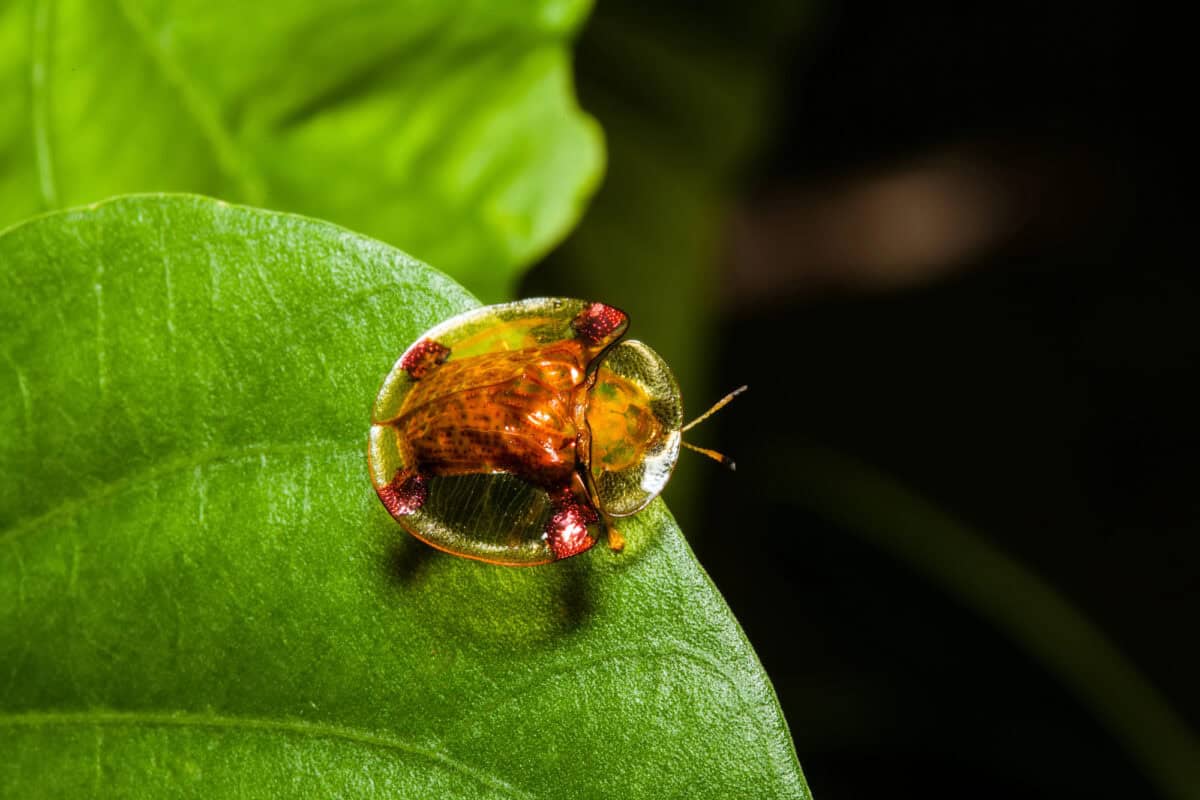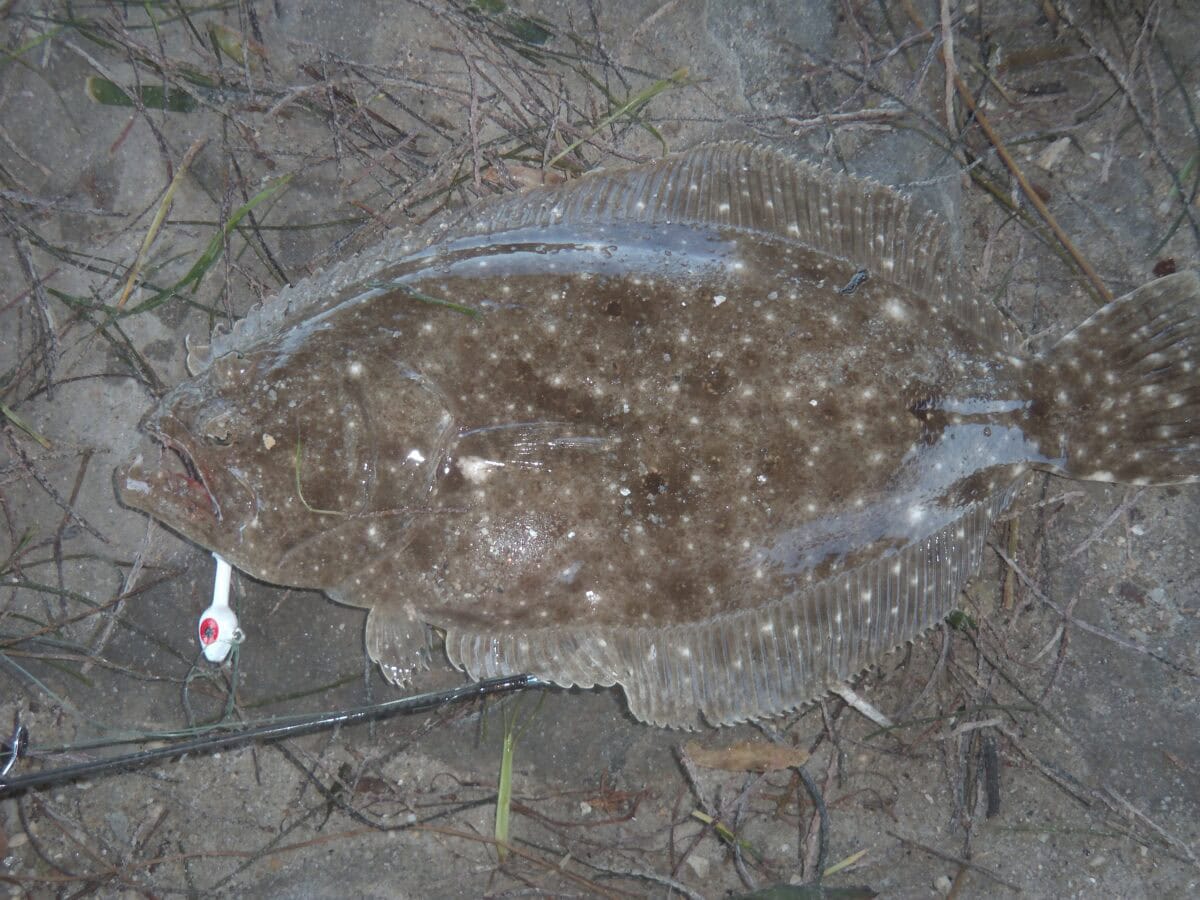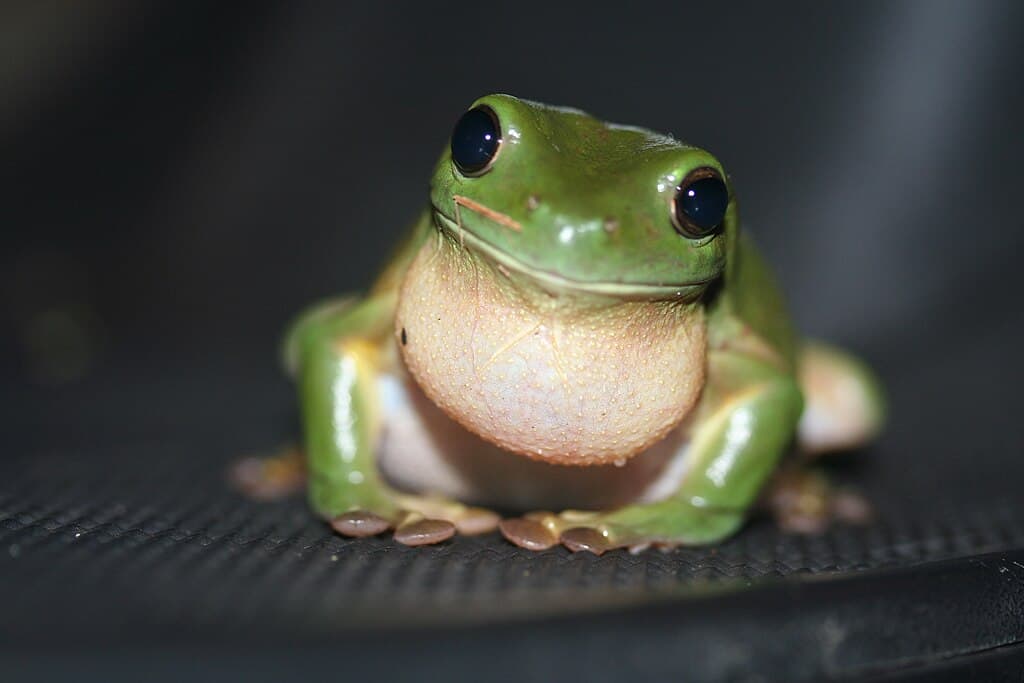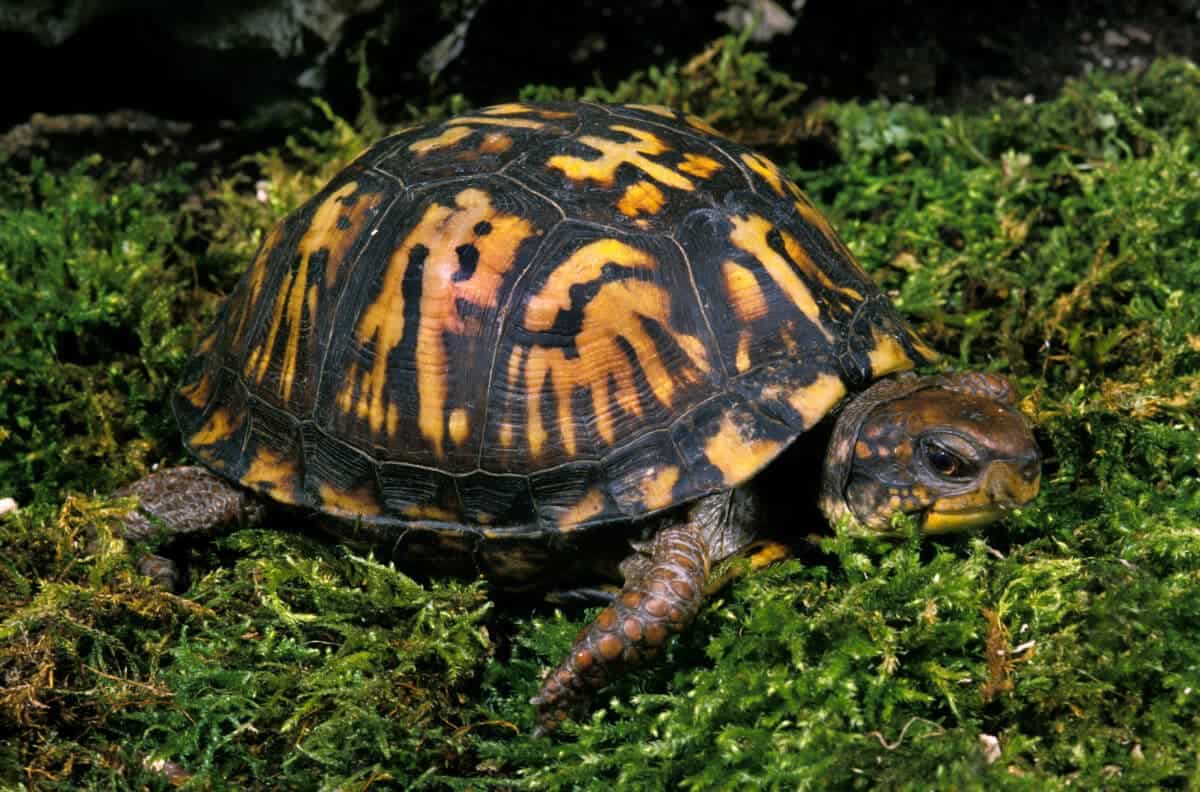Nature’s palette is far more dynamic than most people realize. While chameleons might come to mind when thinking of color-changing animals, they’re just the tip of the iceberg. The animal kingdom is filled with remarkable creatures that can transform their appearance for survival, communication, or adaptation to their environment. These chromatic shifts range from subtle to dramatic, and the mechanisms behind them are as diverse as the animals themselves. From the depths of the ocean to forest canopies, these color-changing masters have developed extraordinary abilities that often go unnoticed. Let’s explore twelve fascinating animals whose color-changing talents might surprise you.
12. The Golden Tortoise Beetle

The Golden Tortoise Beetle (Charidotella sexpunctata) is a small insect that performs one of the most dramatic color transformations in the insect world. In its relaxed state, this beetle shimmers with a brilliant metallic gold that would make any jeweler envious. However, when disturbed or stressed, it can rapidly shift to a reddish-orange or even a dull brown color. This remarkable transformation occurs thanks to microscopic cavities in its exoskeleton that contain reflective liquid. When the beetle is calm, these cavities are filled and reflect light to create that golden appearance. When threatened, the beetle can drain these cavities, changing how light reflects off its shell and altering its appearance. Found throughout North and South America, these tiny beetles (measuring just 5-7mm) demonstrate that some of nature’s most impressive color-changing abilities come in small packages.
11. The Mimic Octopus

The Mimic Octopus (Thaumoctopus mimicus) is perhaps the ultimate master of disguise in the animal kingdom. Discovered relatively recently in 1998 in the waters of Indonesia, this cephalopod goes beyond simple color changes. It can transform its color, texture, shape, and behavior to mimic at least 15 different marine species, including sea snakes, lionfish, and flatfish. Using specialized cells called chromatophores, leucophores, and iridophores, the mimic octopus can rapidly change colors and patterns across its entire body. What makes this octopus truly extraordinary is its apparent ability to select which creature to impersonate based on the threat it faces, showing a level of intelligence and adaptability that’s rare among invertebrates. For instance, when threatened by damselfish, it may imitate a sea snake, a known predator of damselfish. This sophisticated mimicry has evolved as both a defensive strategy and a hunting technique, allowing it to approach prey while disguised as a harmless creature.
10. The Cuttlefish’s Mesmerizing Display

Cuttlefish, close relatives of squid and octopuses, possess perhaps the most sophisticated color-changing abilities in the animal kingdom. Their skin contains up to 200 specialized cells per square millimeter, including chromatophores (pigment-containing cells), iridophores (reflective cells), and leucophores (white reflecting cells). This complex system allows cuttlefish to change color and pattern in less than a second, producing a hypnotic display of waves, stripes, and spots that can mimic their surroundings with astonishing accuracy. What’s particularly remarkable is that cuttlefish are colorblind, yet can match the colors of their environment perfectly. Scientists believe they may be able to detect different wavelengths of light through their skin. Male cuttlefish use their color-changing abilities not just for camouflage but also during mating displays. They can even display different patterns on each side of their body, appearing calm to a female on one side while threatening rival males on the other—a level of control that demonstrates the sophisticated neural mechanisms behind these changes.
9. The Arctic Fox’s Seasonal Wardrobe

The Arctic Fox (Vulpes lagopus) undergoes one of the most dramatic seasonal color transformations of any mammal. During summer months, these foxes sport a brown or grayish-brown coat that helps them blend into the tundra’s rocky terrain and sparse vegetation. As winter approaches and the landscape becomes covered in snow, they transform completely, developing a thick, pure white coat that provides nearly perfect camouflage in their snow-covered habitat. This remarkable adaptation isn’t just about changing color—it’s a complete replacement of their fur through molting, triggered by changing day length rather than temperature. The winter coat isn’t just different in color; it’s also about 200% thicker than their summer coat, providing crucial insulation in temperatures that can drop to -50°F (-45°C). This seasonal transformation represents one of nature’s most effective adaptations for survival in extreme environments, helping these small predators both avoid being seen by larger predators and sneak up on their prey.
8. The Pacific Tree Frog’s Quick Changes

The Pacific Tree Frog (Pseudacris regilla), also known as the Pacific Chorus Frog, possesses a remarkable ability to change color that few amphibians can match. These small frogs, typically only 1-2 inches long, can transform from bright green to brown and various shades in between in just a matter of minutes—significantly faster than most other color-changing amphibians. Unlike chameleons that change color primarily for communication, Pacific Tree Frogs alter their appearance mainly for camouflage, matching leaves, bark, or soil depending on their surroundings. This transformation is controlled by hormones that affect specialized cells called chromatophores in their skin. Interestingly, their color-changing ability is influenced not only by their background but also by temperature, humidity, and even their emotional state. Studies have shown that stressed frogs tend to darken, while relaxed ones often display lighter colors. Found along the western coast of North America, these vocal amphibians demonstrate that impressive adaptability can come in small packages.
7. The Remarkable European Flounder

The European Flounder (Platichthys flesus) exemplifies remarkable adaptive camouflage among fish species. These flatfish begin life swimming upright like typical fish, but as they develop, one eye migrates across their head, and they begin swimming on their side. The side facing upward—now effectively their “top”—develops an extraordinary ability to match the color, pattern, and even texture of the ocean floor with incredible precision. Using specialized cells called chromatophores, iridophores, and leucophores, flounders can replicate a wide variety of substrates, from sandy bottoms to rocky, complex patterns. What makes their camouflage particularly impressive is that it works in multiple environments, as flounders migrate between fresh and saltwater throughout their lives. Research has shown they can change their appearance in as little as 2-8 seconds when moving to a new background. This adaptation is crucial for their survival strategy of lying in wait for prey while avoiding predators. Their color-changing precision is so effective that perfectly camouflaged flounders are nearly impossible to spot until they move, demonstrating how evolutionary pressures can produce astonishing adaptive capabilities.
6. The Mood-Reflecting Moorish Idol

The Moorish Idol (Zanclus cornutus), widely recognized from its appearance in “Finding Nemo” as the character Gill, possesses color-changing abilities that aren’t widely known outside marine biology circles. These distinctive black, white, and yellow tropical fish can subtly alter their coloration based on their emotional state, health condition, and surrounding environment. When stressed or ill, their normally vibrant yellows and crisp blacks can fade dramatically, while their whites may take on a grayish hue. During courtship displays, males can intensify their colors, particularly the yellows, creating a more striking appearance to attract mates. What makes this color change particularly interesting is that it serves as a reliable indicator of the fish’s overall wellbeing, making Moorish Idols living barometers of environmental conditions in their coral reef habitats. The mechanism behind these changes involves special pigment cells that can expand or contract based on hormonal signals. Though not as dramatic or rapid as some other animals on this list, the Moorish Idol’s color adaptability showcases how chromatic changes can serve multiple biological purposes beyond simple camouflage.
5. The Snow Leopard Crab Spider

The Snow Leopard Crab Spider (Thomisus onustus), sometimes simply called the Flower Crab Spider, demonstrates one of the most impressive color adaptations among arachnids. These small hunters don’t build webs; instead, they ambush prey by sitting on flowers and waiting for unsuspecting insects. Their remarkable adaptation is the ability to change between white and yellow (and sometimes pink) depending on the flower they’re perched upon. This transformation isn’t instantaneous—it can take 10-25 days for a complete color change—but the result is nearly perfect camouflage that makes them invisible to both prey and predators. The color change is facilitated by the production or degradation of pigments called ommochromes in response to visual cues from their environment. Fascinatingly, research has shown that these spiders can detect and match the specific reflectance patterns of flowers in the ultraviolet spectrum—colors invisible to humans but visible to many insects. This adaptation demonstrates how evolution can fine-tune predatory strategies to exploit the specific visual capabilities of both predator and prey, creating a sophisticated hunting system in a creature no larger than a fingernail.
4. The Vibrant African Reed Frog

The African Reed Frog (Hyperolius viridiflavus) exhibits one of the most dramatic sex-linked color differences in the amphibian world, combined with impressive color-changing abilities. Males generally maintain a consistent greenish coloration, but females undergo a remarkable transformation throughout their lives. Juvenile females closely resemble males with their green coloration, but as they mature, they develop striking patterns of red, yellow, silver, or white. What makes these frogs particularly fascinating is their ability to further modify these colors based on environmental conditions. During dry seasons, they can lighten their skin color significantly, reflecting more sunlight and reducing water loss—a crucial adaptation in their sometimes harsh African habitats. The mechanism behind these changes involves specialized chromatophores in their skin that can expand or contract, revealing different pigments. Additionally, these frogs can produce a thin layer of reflective guanine crystals under their skin that helps reflect heat. This sophisticated combination of sex-based coloration and environmental adaptation demonstrates how a single species can evolve multiple color-changing mechanisms to address different evolutionary pressures simultaneously.
3. The Adaptable Peron’s Tree Frog

Peron’s Tree Frog (Litoria peronii), also known as the Emerald-spotted Tree Frog, is an Australian amphibian with remarkable color-changing abilities that work at different timescales. Their standard appearance ranges from pale green to almost black, but what makes them extraordinary is their ability to change both rapidly for immediate camouflage and slowly for seasonal adaptation. Within minutes, these frogs can adjust their tone to match their surroundings, growing darker when on bark and lighter when on leaves. Over longer periods, they tend to become paler during hot, dry weather and darker during cool, wet conditions. What distinguishes Peron’s Tree Frog from many other color-changing amphibians is the presence of emerald-green flecks scattered across their skin that remain constant regardless of their background color changes. These spots contain different pigment cells than the rest of their skin and are thought to help break up their outline when viewed by predators. The combination of rapid camouflage changes and longer-term seasonal adaptations showcases the multiple layers of color adaptation that can evolve in a single species, helping these vocal frogs survive in Australia’s variable climate.
2. The Caribbean Reef Squid’s Light Show

The Caribbean Reef Squid (Sepioteuthis sepioidea) possesses one of the most sophisticated color communication systems in the animal kingdom. Using specialized skin cells called chromatophores, iridophores, and leucophores, these cephalopods can produce an astonishing array of colors, patterns, and even polarized light signals that are invisible to the human eye but visible to other squids. What makes their color-changing ability particularly remarkable is how they use it for complex social communication. These squids can display different patterns on different sides of their body simultaneously, showing aggressive displays toward rival males on one side while courting females with gentle, attractive patterns on the other side. They’ve developed a veritable language of color, with specific patterns indicating aggression, submission, courtship readiness, and alarm. Research has documented at least 35 distinct display patterns, each with its meaning in squid social interactions. When hunting, they can produce hypnotic, pulsating color waves to mesmerize prey. This sophisticated visual communication system evolved even though squids have relatively short lifespans of only 6-8 months, showcasing how powerful the evolutionary pressure for effective communication can be in social marine species.
1. The Color-Shifting Eastern Box Turtle

The Eastern Box Turtle (Terrapene carolina carolina) demonstrates one of the more subtle but fascinating color-changing abilities among reptiles. Unlike the rapid transformations seen in chameleons or octopuses, these turtles undergo slower changes that reflect their age, health, and environmental conditions. Young Eastern Box Turtles typically display vivid patterns with bright yellows and oranges on their carapace (upper shell), but as they age, these colors can significantly darken or brighten depending on various factors. During periods of illness or nutritional deficiency, their normally vibrant colors can fade dramatically, while improved conditions can restore their brightness. Additionally, male Eastern Box Turtles often develop bright red or orange eye color during the breeding season, which fades during non-breeding periods. What makes their color adaptation particularly interesting is how it serves as a visible record of their life history—researchers can often determine not just the age but also past periods of stress or illness by studying color patterns on their shells. While not as flashy as some color-changers, these long-lived turtles (they can survive 100+ years) demonstrate how even slow-changing animals can evolve chromatic adaptability to serve multiple biological functions.
Conclusion: Nature’s Living Canvases

The ability to change color represents one of nature’s most remarkable adaptations, serving functions from camouflage and temperature regulation to communication and mating displays. What’s particularly fascinating is how this similar trait has evolved independently across such diverse animal groups—from invertebrates like octopuses and insects to vertebrates like fish, amphibians, and mammals—showing how powerful the evolutionary advantage of chromatic adaptability can be. The mechanisms behind these transformations are equally diverse, ranging from rapid neurological control of pigment cells to seasonal hormone-triggered changes in fur or feather growth. As we continue to study these remarkable creatures, we’re discovering that many animals have color-changing abilities that went unnoticed for centuries, suggesting there may be many more chromatic masters waiting to be discovered in the natural world. These living canvases remind us that adaptation in nature often occurs not just through physical structure but also through the manipulation of light and color—creating some of the most beautiful and effective survival strategies on our planet.
- 10 Shark Breeds That Prefer Solitude And 2 That Travel in Schools - August 22, 2025
- 12 Most Iconic Animals in U.S. History - August 22, 2025
- 10 Conservation Wins for Eagles And 3 Ongoing Threats - August 22, 2025

